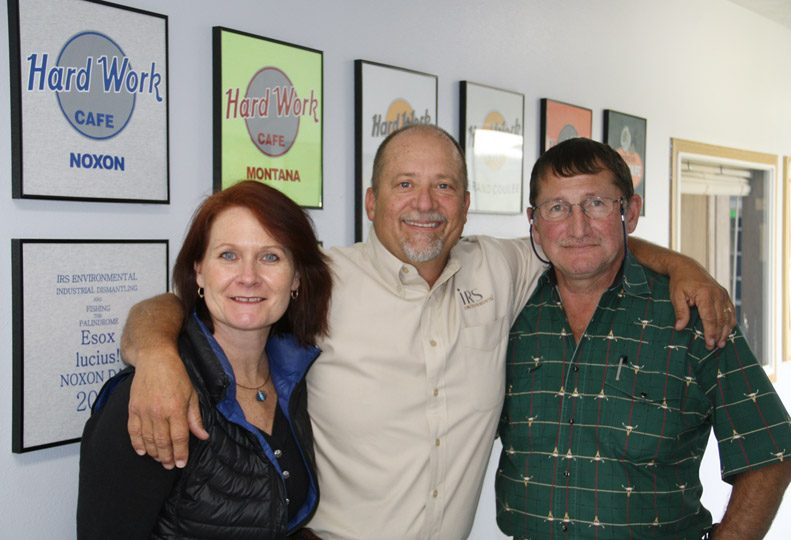
Home » IRS Environmental seeing more LEED projects
IRS Environmental seeing more LEED projects
Company president says green trend still growing

September 10, 2015
Maureen Fay, president of Spokane Valley-based asbestos and lead removal company IRS Environmental of WA Inc., says the top trend she’s noticed in the industry lately has been the shift toward green building projects, many of which are built to Leadership in Energy & Environmental Design, or LEED, specifications.
“Contractors are definitely taking a more green approach to projects. The industry is watching more, keeping careful record of all materials used,” Fay says. “Limiting hazards to people and the environment is very important to them.”
While IRS stands for insulation removal specialists, the company offers many different services including asbestos abatement, demolition of building materials containing lead, lead paint removal and abatement, industrial dismantling and demolition, full service selective interior demolition, and mold remediation. The company works with general contractors, educational institutions, homeowners, business owners, and federal, state, and local governments on renovation, remodeling, and large mechanical dismantling projects.
Located at 12415 E Trent, it currently employs about 70 workers, although Fay says that number varies according to season.
IRS has completed projects for school districts and major employers throughout the Pacific Northwest. Its coverage area includes Washington, Oregon, Idaho, and Montana, with some client-specific projects in other states. Some of the company’s upcoming projects include the Washington State University steam plant tunnels in Pullman, the Bonneville Power Administration’s bell substation in north Spokane, and an elementary school project in Sunnyside, Wash.
The company, which has been in operation since 1983, is fast approaching its 18,000th project.
“We expect that to happen by the end of this year or early next,” says Fay. Fay declined to disclose the company’s revenues.
LEED is the certification program developed by the U.S. Green Building Council, a membership-based 501(c)3 nonprofit organization that promotes sustainability in how buildings are designed, built, and operated.
To receive LEED certification, a building project must satisfy various prerequisites and earn points to achieve different levels of certification. There are four levels of certification—certified (40-49 points), silver (50-59 points), gold (60-79 points) and platinum (80-plus points). The number of points a project earns determines the level of LEED certification that the project will receive.
Building projects that are working toward certification have various team members working towards the overall LEED certification, and one of these is the project administrator. These individuals often take an exam to become what is called a LEED green professional, someone who has earned program credentials through education, volunteering, or work experience on LEED projects.
Fay says IRS doesn’t have any staff members who are LEED certified, as the company is usually functioning as a subcontractor working with general contractors that employ project managers who have completed these kinds of certification classes.
“When IRS works on a LEED project, the general contractor’s LEED-certified person keeps track of a variety of project information,” she says. “This may include any items that are being disposed of and the weights of those materials, materials that would be reused, recycled, or repurposed.”
Besides LEED projects, Fay says services like lead removal are also in higher demand. The Environmental Protection Agency’s website states that it requires individuals and firms that perform lead abatement projects in pre-1978 housing and child-occupied facilities to be certified and follow specific work practices.
“The regulations on lead testing were recently redefined. They didn’t used to be quite as stringent as they are today,” says Fay.
She says demand still is strong for asbestos removal, which many people might have thought would be mostly cleaned up by now, after having been banned in the U.S. 12 years ago.
“It’s still out there,” she says. “You may still find trace amounts in certain products. Also some older buildings have been remodeled in sections over a long period of time, so some older areas may still have asbestos.” Fay says while asbestos removal projects may no longer be as large as they used to be, they’re still plentiful.
The IRS website states its staff are certified licensed asbestos and lead abatement specialists, with all environmental work completed at or above EPA and local agency regulation requirements.
While prospective employees usually have some demolition or construction background, training is usually project specific.
“We offer classes that are specific to projects, but generally workers will get their asbestos worker card, lead removal and construction training, (attend) a hazardous waste operations and emergency response (HAZWOPER) information and awareness class, and (receive) OSHA safety training,” says Fay.
IRS Environmental began in 1982, as Insulation Removal Specialists. Partners Robert Reed and Carl Burnham bought the business in 1997 and changed its name.
Fay bought into the company in 2013, and currently owns 51 percent of the company, with Reed and Burnham owning the remaining 49 percent.
Up Close
Related Articles



![Brad head shot[1] web](https://www.spokanejournal.com/ext/resources/2025/03/10/thumb/Brad-Head-Shot[1]_web.jpg?1741642753)
